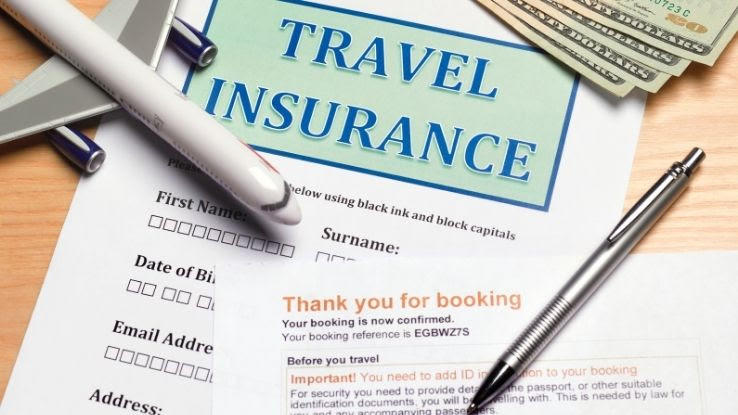Rumored Buzz on Pacific Prime
Little Known Questions About Pacific Prime.
Table of ContentsHow Pacific Prime can Save You Time, Stress, and Money.Getting My Pacific Prime To WorkUnknown Facts About Pacific PrimeWhat Does Pacific Prime Mean?Getting The Pacific Prime To Work

This is due to the fact that the information were collected for a duration of solid economic performance. Of the approximated 42 million people who were uninsured, all yet regarding 420,000 (concerning 1 percent) were under 65 years old, the age at which most Americans end up being eligible for Medicare; 32 million were adults in between ages 18 and 65, around 19 percent of all grownups in this age team; and 10 million were children under 18 years old, about 13.9 percent of all kids (Mills, 2000).
These quotes of the variety of individuals uninsured are produced from the annual March Supplement to the Present Population Survey (CPS), performed by the Census Bureau. Unless otherwise noted, nationwide quotes of individuals without medical insurance and proportions of the population with different type of insurance coverage are based on the CPS, one of the most extensively made use of source of quotes of insurance coverage and uninsurance prices.
Examine This Report on Pacific Prime

Still, the CPS is specifically valuable due to the fact that it generates annual price quotes reasonably promptly, reporting the previous year's insurance policy coverage estimates each September, and because it is the basis for a consistent collection of price quotes for greater than two decades, permitting evaluation of trends in protection in time. For these factors, in addition to the extensive usage of the CPS in various other research studies of insurance policy protection that are offered in this record, we count on CPS price quotes, with constraints noted.

The price quote of the number of without insurance people expands when a populace's insurance policy condition is tracked for numerous years. Over a three-year duration beginning early in 1993, 72 million individuals, 29 percent of the U.S. https://www.imdb.com/user/ur179624537/. populace, lacked protection for at the very least one month. Within a solitary year (1994 ), 53 million individuals experienced at the very least a month without insurance coverage (Bennefield, 1998a)
6 out of every ten without insurance grownups are themselves utilized. Although functioning does enhance the possibility that one and one's member of the family will have insurance policy, it is not an assurance. Also participants of households with two permanent wage income earners have nearly a one-in-ten opportunity of being uninsured (9.1 percent without insurance rate) (Hoffman and Pohl, 2000).
Excitement About Pacific Prime
New immigrants represent a considerable proportion of individuals without medical insurance. One evaluation has associated a considerable portion of the recent development in the dimension of the united state uninsured population to immigrants that arrived in the nation between 1994 and 1998 (Camarota and Edwards, 2000). Current immigrants (those that pertained to the United States within the previous four years) do have a high price of being without insurance (46 percent), however they and their children account for just 6 percent of those without insurance policy nationally (Holahan et al., 2001).
The connection between wellness insurance policy and access to care is well established, as documented later in this phase. Although the partnership in between medical insurance and wellness end results is neither straight neither straightforward, a substantial scientific and health and wellness solutions research literary works links wellness insurance protection to better accessibility to care, much better high quality, and enhanced personal and populace wellness condition.
Degrees of analysis for analyzing the effects of uninsurance. This conversation of health and wellness insurance protection concentrates mostly on the U.S. populace under age 65 since practically all Americans 65 and older have Medicare or other public coverage. It concentrates particularly on those without any wellness insurance for any size of time.
The 4-Minute Rule for Pacific Prime
The troubles encountered by the underinsured are in some aspects similar to those encountered by the without insurance, although they are normally less extreme. Wellness insurance policy, nevertheless, is neither required nor enough to acquire access to clinical services. The independent and direct result of health and wellness insurance protection on access to health and wellness solutions is well developed.
Others will obtain the healthcare they require even without health and wellness insurance, by paying for it expense or seeking it from carriers that use treatment cost-free or at highly subsidized prices. For still others, medical insurance alone does not ensure invoice of care due to the fact that of various other nonfinancial barriers, such as an absence of healthcare companies in their neighborhood, minimal accessibility to transportation, read the article illiteracy, or etymological and social differences.
The Main Principles Of Pacific Prime
Formal study regarding without insurance populations in the United States dates to the late 1920s and very early 1930s when the Committee on the Expense of Treatment generated a series of reports regarding financing doctor workplace brows through and hospital stays. This concern became salient as the numbers of medically indigent climbed up during the Great Depression.